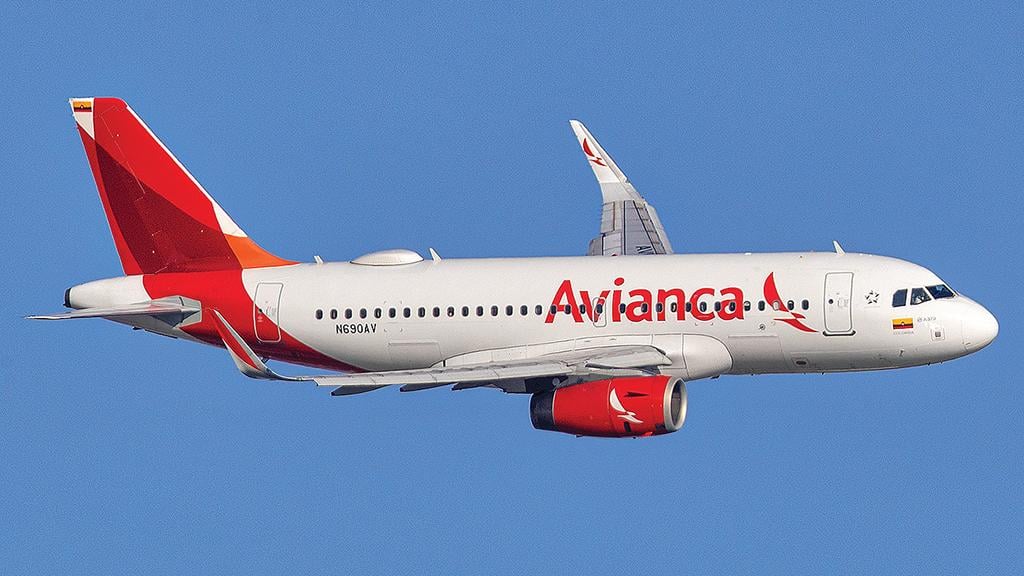
Jose Luis Quiros, Avianca’s senior vice president for maintenance and engineering, talks with Lee Ann Shay about how the Colombia-based airline is adapting its aftermarket practices to the pandemic.
What is Avianca’s fleet status? How many aircraft are flying, and how many are parked or in long-term storage?
Given the current situation, the market behavior and the revival of the sector changes almost every week. So does the state of the fleet, but we are very aligned with other airlines in the region and around the world in terms of percentage of the total fleet grounded.
What maintenance and engineering activities are underway?
We are running all the activities of the maintenance and engineering organization with total normality. Resources are adjusted to network demands, depending on market forecasts. Obviously, we added maintenance activities to the routine, including those we were carrying out prior to March 2020, those that are derived from the aircraft storage, redeliveries and replacement.
This new scenario definitely challenged us, as it is much more difficult to do proper midterm planning, and flexibility is becoming the most desired skill in the organization. New processes were implemented to make sure we can react efficiently to the short-term requirements, increasing aircraft availability quickly while minimizing the impact on costs.
Is Avianca moving any MRO work forward given the reduced flying schedule?

In the first half of 2020, maintenance activity was ruled strictly by cash position. Until the third quarter, the operation level was minimum, limited to humanitarian flights. During the second half of the year, the focus was on guaranteeing the airline’s operational ramp-up by releasing only required aircraft back into service.
The consequence of this strategy has been that a certain volume of maintenance work was moved forward to this year; so although the operation and fleet size will be reduced in comparison to 2019, our maintenance activity will be basically at the same level as 2019, mainly in heavy maintenance.
How is the Chapter 11 restructuring affecting the maintenance and engineering organization?
The basics of the Chapter 11 restructuring (size adjustment, transformation of the business model, reinforcement of cost-reduction policies, etc.) applies equally across the airline organization, including maintenance and engineering.
On the other hand, as contract renegotiations are one of the protections provided by the Chapter 11 post-petition procedures, different outsourced maintenance services are being restructured in two ways: scope and terms and conditions. It is important to highlight that most of our suppliers, which are also suffering the consequences of the COVID-19 crisis, are being cooperative with the aim of finding solutions that will allow both parties to overcome the situation.
Finally, the resolution of the pre-petition commitments and work-in-process services, mainly affecting engines, is the third element of discussions with suppliers, as they are out of the scope of the Chapter 11 procedures.
How do maintenance and engineering operations within your organization differ between operating countries? Do you expect any changes in 2021?
Even though a significant portion of our maintenance capacities is located in Colombia, we have facilities in different countries, basically in Central America and Ecuador. In 2019 an effort was made to rationalize, avoid overlaps and build specialized maintenance centers (particularly in Guatemala and El Salvador) to support the growth of the activities consistent with the pre-COVID-19 strategy.
The new and different requirements that came after March 2020 for both Avianca Holdings and other airlines forced us to reshape the network and reduce capacity accordingly, and consider the mid-term forecast.
Most of the adjustments were made before the end of 2020, together with 2021 budget preparation, so we only expect to fine-tune the model this year.
Do you still hope to grow third-party MRO work? Is that still part of your outlook for 2025?
In addition to the resizing of Avianca, every airline in the region and around the world is going through the same process. It is commonly accepted that this reduction is an average 30% in capacity. Consequently, the maintenance needs have been reduced accordingly. It is not clear the global MRO capacity is following this trend, leading to overcapacity in the short- and probably medium-term.
This is not the best scenario in which to pursue a growth strategy, and efforts must be dedicated to guarantee a successful restructuring of Avianca to exit Chapter 11. Once this first leg in 2021-23 has been covered, the long-term maintenance strategy might be reevaluated according to the MRO market conditions.
What is the status of the additional hangar in Bogota that was approved in early 2020? Was it tendered last year?
Until March 2020, the new maintenance facility project was on track, specifications were closed and premises reserved. Given the circumstances, it is easy to understand that it does not make sense to continue with the same schedule. Currently, it is not a priority to update the scope and schedule of the project according to the new conditions.
Are there any bright spots that have come out of the pandemic—for instance, some projects that were accelerated?
As they say, “When you do not succeed, you learn. . . .” We would not be responsible if we do not make it out of this crisis by implementing deep changes in business models and procedures, transforming our company and adjusting to a new reality.
The brightest spot is clearly the rapid implementation of new ways of running our air transport operations in almost every area and shifting the focus accordingly. One priority in maintenance and engineering is the acceleration of the digital transformation, which has been boosted by the pandemic. Even though we were already moving in this direction, priorities changed and, as resources became available, projects related to it have been revamped. Using big data to enable predictive maintenance and application of AI tools will be at the top of the list this year.
How will the Latin American MRO industry change post-recovery?
Despite the fact that changes in the MRO industry will take place worldwide, and there will not be significant differences across the regions (overcapacity, need for flexibility, difficulties in midterm planning, supply chain and logistics, etc.), the fact that the three largest carriers in Latin America are under Chapter 11 might make these changes deeper than in other regions.
On the other hand, growth of MRO capacity in Latin America might also slow down and, in my opinion, it will take time to see new players in the region in the coming years. Regional demand will decrease and travel restrictions will impact the ability of operators outside of the Americas to consider MRO here as an option.





